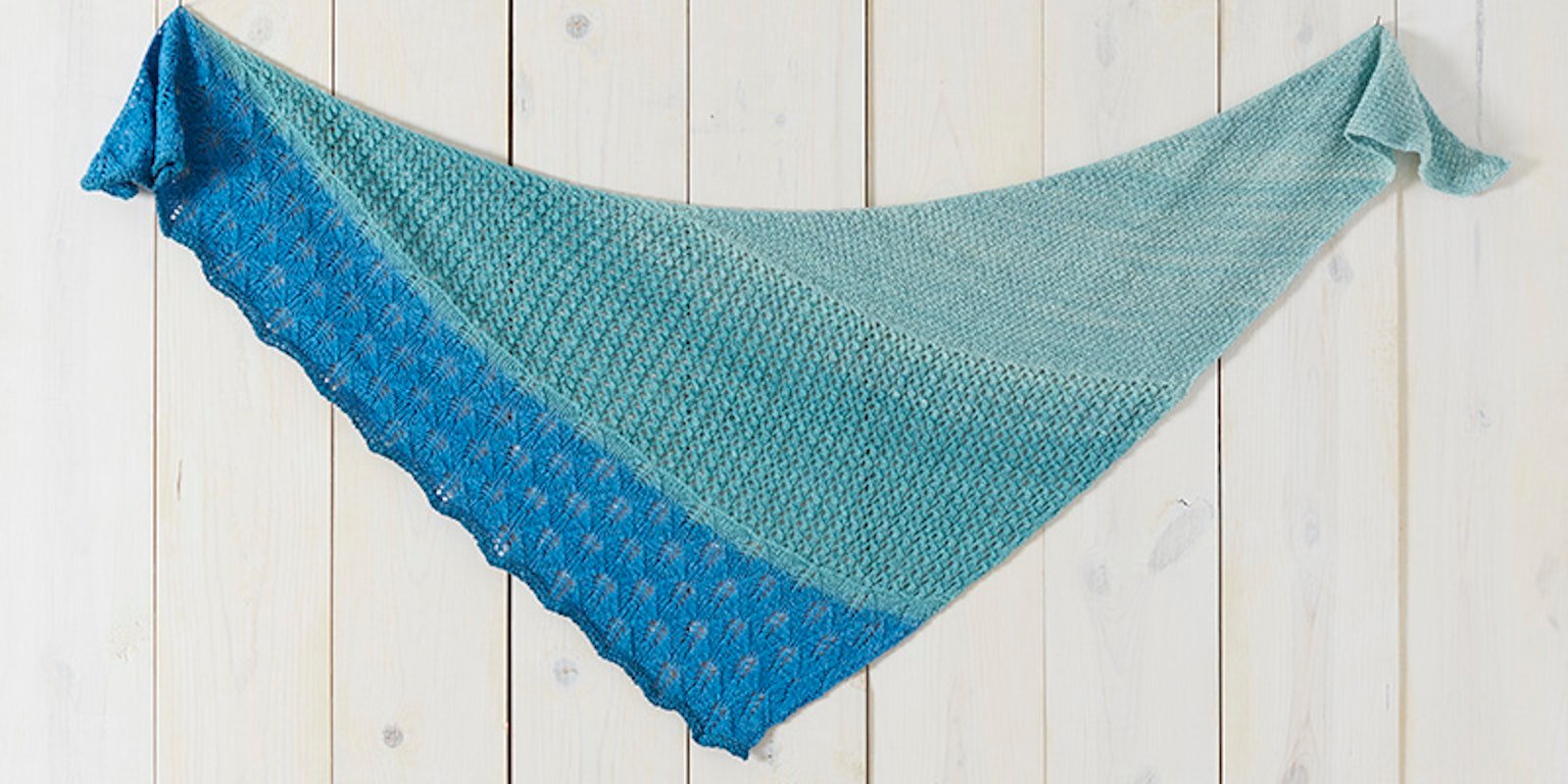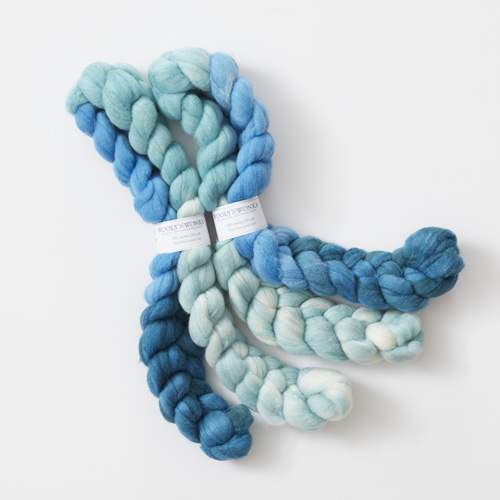I am the boss of my yarn! I can blend colors! I can change from one fiber to another in the same skein of yarn! I can spin gradient yarn from any old fibers! But sometimes being the boss is too much work. Sometimes you want the fiber to do the work for you. You want to spin gradient-dyed fiber.
There are more ways than you might think to spin gradient yarn that preserve the color progression.
1. Keep it singles.
The Stone & Fire Cowl by Amy Tyler uses energized singles in gradient yarn to create three-dimensional knitting. Photo by George Boe from Spin + Knit 2016.
The obvious solution: If you spin back and forth across the braid from beginning to end, the colors will transition gently. Depending on the staple length and the way the fiber was dyed, you might get a little speckling in places, but it’s pretty smooth sailing. The catch: Singles are inherently unbalanced and prone to abrasion.
2. Chain ply.
(Or Navajo ply—whatever you want to call it.) Chaining the singles shortens the runs of color by two-thirds but generally preserves the color pattern and solves the balance problem. It has its own drawbacks, though: the little nubs where the chains intersect can disrupt the color flow, and when the color begins to shift, it can look jerky from one chain to the next unless you finesse the loops.
3. Two-ply (or more).
Keeping the color flow even in two strands requires care in two areas: consistency in spinning and consistency in the original fiber source. Spinning two completely equal pieces of fiber, you can still come out uneven if you draft one more finely than the other. Getting two completely equal pieces of fiber in the first place is tricky unless you have two matching braids; splitting lengths of top is inexact and very unlikely to result in equal parts. This is when I like having as many braids as I’ll have plies, as in the Cenote Gradient Shawl (pictured at top)—no splitting required.
Two braids, two plies . . . Life is good
Tip from Jillian Moreno’s 12 Ways to Spin Handpainted Top that goes back to the “boss of your yarn” theme: If one of the plies gets a little ahead of the other, break it and remove a little before splicing it back in. It will be very difficult to see even up close.
4. Corespin.
Surprise! We’ve lately thought of corespinning as an art yarn technique, but you can use it to create a smooth yarn that maintains the rhythm of a gradient-dyed braid. I wouldn’t have considered it without 12 Ways to Spin Handpainted Top, either.




